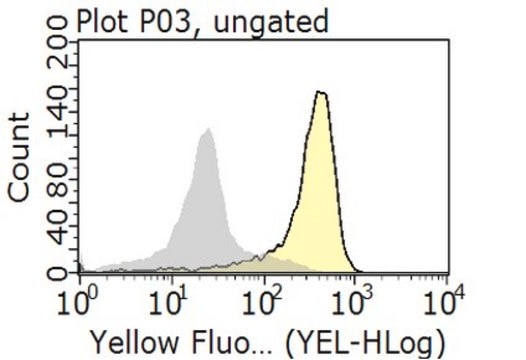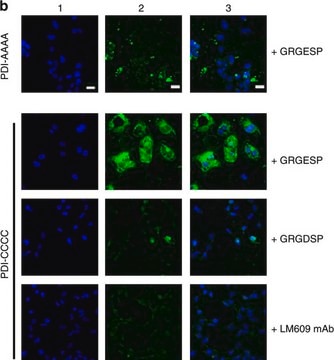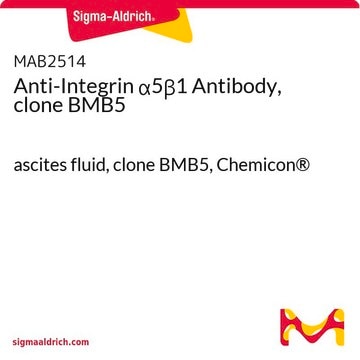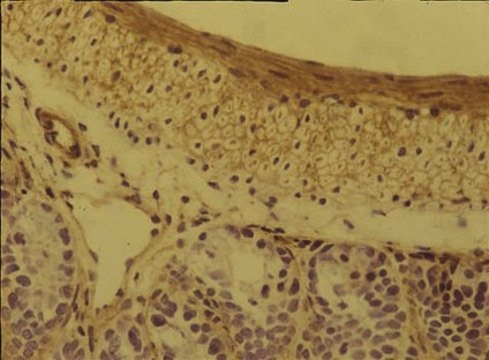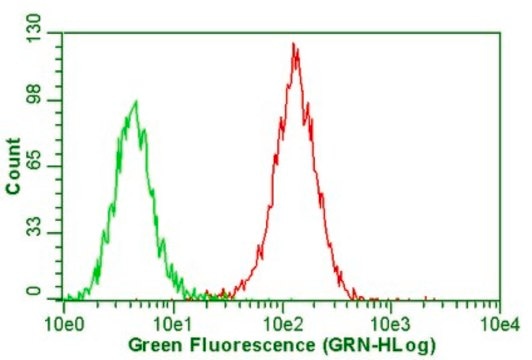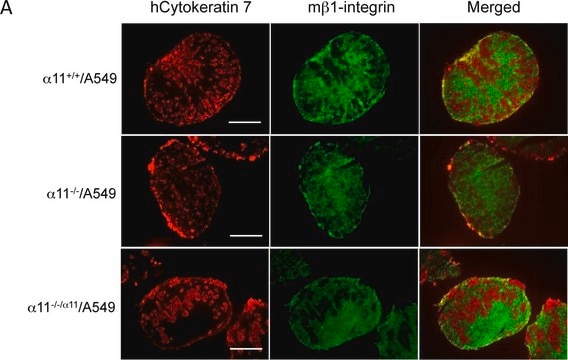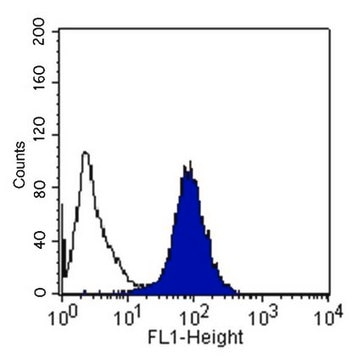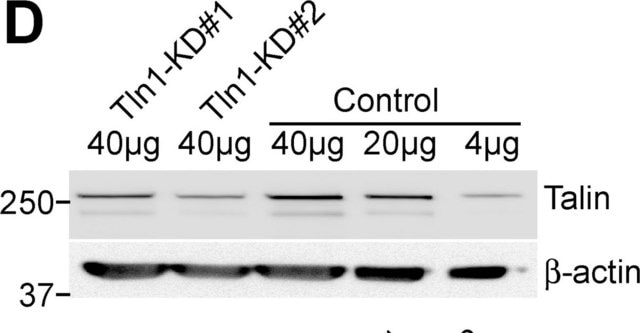MAB1969-I
Anti-Integrin α5β1 Antibody
Synonym(s):
Integrin antibody
About This Item
Recommended Products
biological source
mouse
Quality Level
conjugate
unconjugated
antibody form
purified antibody
antibody product type
primary antibodies
clone
JBS5, monoclonal
mol wt
observed mol wt ~114.54 kDa
species reactivity
human
species reactivity (predicted by homology)
monkey
packaging
antibody small pack of 100 μL
technique(s)
ELISA: suitable
flow cytometry: suitable
inhibition assay: suitable
radioimmunoassay: suitable
western blot: suitable
isotype
IgG1
UniProt accession no.
shipped in
dry ice
storage temp.
2-8°C
target post-translational modification
unmodified
Related Categories
General description
Specificity
Immunogen
Application
Evaluated by Flow Cytometry in HT-1080 cells.
Flow Cytometry Analysis: 1 μg of this antibody detected Integrin a5b1 in one million HT-1080 cells.
Tested Applications
ELISA Analysis: A representative lot detected Integrin a5 in ELISA applications (Mould, A.P., et. al. (1998). Biochem J. 331 ( Pt 3)(Pt 3):821-8).
Western Blotting Analysis: A representative lot detected Integrin a5 in Western Blotting applications (Ria, R., et. al. (2002). Haematologica. 87(8):836-45; Gu, C., et. al. (2001). Mol. Cell. Biol. 21(14):4579-97).
Immunocytochemistry Analysis: A representative lot detected Integrin a5 in Immunocytochemistry applications (Gong, X., et. al. (2018). EMBO J. 37(17):e98994).
Inhibition Analysis: A representative lot of this antibody produced inhibition of fibrinogen-, fibronectin- and laminin-mediated cell adhesion. (Wattam, B., et. al. (2001). Biochem J. 356(Pt 1):11-7; Rahman, S., et. al. (1998). Biochem J. 335 (Pt 2)(Pt2):247-57; Mould, A.P., et. al. (1998). Biochem J. 331 ( Pt 3)(Pt 3):821-8; Gu, C., et. al. (2001). Mol Cell Biol. 21(14):4579-97).
Immunohistochemistry Applications: A representative lot detected Integrin 5?1 in Immunohistochemistry applications (Hernandez, P.A., et. al. (2020). Sci Rep. 10(1):627; Qin, L., et. al. (2003). Biol Reprod. 69(2):563-71).
Immunoprecipitation Analysis: A representative lot detected Integrin 5?1 in Immunoprecipitation applications (Nishida, T., et. al. (2007). J Cell Commun Signal. 1(1):45-58; Gu, C., et. al. (2001). Mol Cell Biol. 21(14):4579-97).
Note: Actual optimal working dilutions must be determined by end user as specimens, and experimental conditions may vary with the end user
Physical form
Storage and Stability
Other Notes
Disclaimer
Not finding the right product?
Try our Product Selector Tool.
wgk_germany
WGK 1
flash_point_f
Not applicable
flash_point_c
Not applicable
Certificates of Analysis (COA)
Search for Certificates of Analysis (COA) by entering the products Lot/Batch Number. Lot and Batch Numbers can be found on a product’s label following the words ‘Lot’ or ‘Batch’.
Already Own This Product?
Find documentation for the products that you have recently purchased in the Document Library.
Our team of scientists has experience in all areas of research including Life Science, Material Science, Chemical Synthesis, Chromatography, Analytical and many others.
Contact Technical Service